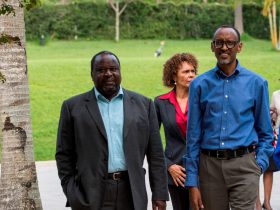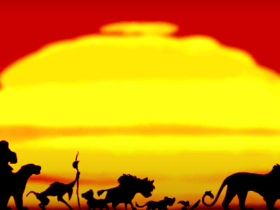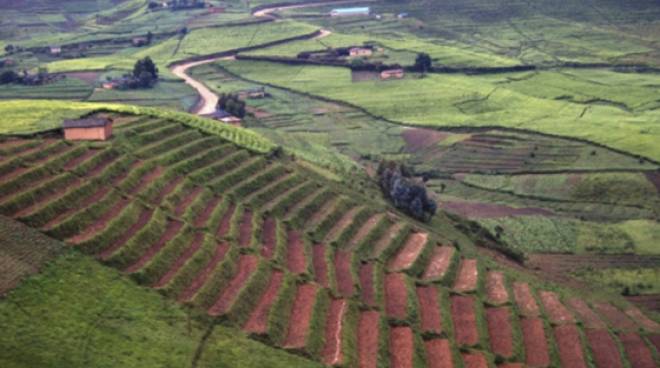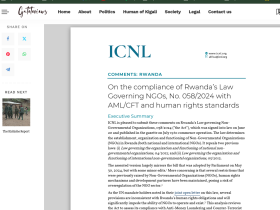In 1998 two French researchers argued that Rwanda’s demographics are growing geometrically, while their economy grows arithmetically. They concluded that Rwanda was caught in a “Malthusian Trap.” The study is indeed old. Yet, it has since shaped the discourse by consistent referencing with its most recent being last month in May 2016: by ‘the Board of Regents of the University of Wisconsin’ (3rd reference: http://bit.ly/1qYdkHb)
‘We are sitting on a time bomb!’ said a local journalist recently, pointing out that we are growing in density while our land isn’t expanding. However, and thanks to research by Prof. Alfred Bizoza, we are now able to say that previous assertions; namely, the ‘Malthusian Trap and Time Bomb’, were both scientifically incorrect.
In his research, Bizoza, an expert in Agriculture Economics and Associate Professor at the University of Rwanda, shows that population growth at its current pace in Rwanda may not be a problem till the 2050’s.
Professor Bizoza, who is also the director of research at the Institute of Policy Analysis and Research (IPAR) Rwanda, showed that population growth is rather an enabler for the overall economic development and the only problem would be failure to create other opportunities within the agriculture value-chains.
The two French researchers had used land as the sole benchmark against Rwanda’s demographic growth, and omitted industry, service, entrepreneurship and other sectors that have been equally growing. The French researchers made it seem as if all Rwandans do is farm the land. This would be little like saying that Dubai will plummet when the oil dries up, and disregard the fact that it is also a vibrant business hub, a world market with booming tourist, hotel industries and a world-class airline.
Professor Bizoza explains that current estimates show that 55 – 58 per cent of total agricultural land area remains potentially uncultivated. And, with room for increment in irrigation, fighting soil erosion, tapping into land consolidation impact, and the most critical of all, more financing in agriculture, we are still under-utilizing our land.
‘Umutungo w’urwanda n’abanyarwanda…’ (Rwanda’s wealth is its People), so we’ve often heard our President say. Repeating himself as if he felt the concept isn’t yet entrenched in his people, the same he counts on to lift Rwanda out of poverty, rapidly.
Why the reticence, Yee people of little faith? Well, common sense simply urges caution. In spite of their best intentions Rwandans are alive to the structural challenges facing their tiny, landlocked, densely populated, post conflict nation; The Rwandan Tragedy: Increasing population and land scarcity.
Yes they like listening to their President preaching Agaciro and self-reliance, on this score though, they would have preferred to be sitting on oil reserves or Kimberley diamonds.
Some of us had taken a short cut: If Hong Kong, with an area of 1.104 km2 can feed 7.2 million inhabitants, there must be a way to feed 10, 20 or even 30 million Rwandans with 26,400 km2: all commonsensical then, nothing scientific.
Alas, researchers didn’t help. Granted. Paul Collier for instance, renowned economist, he explained in his book: ‘The Bottom Billion’, that ‘landlocked territories with no natural resources, simply shouldn’t become autonomous countries’, even ironizing: ‘whatever they do, at some point they just can defy gravity…’
Just like the commentaries, the catchy aphorism couched in common sense, bred doubt on Rwanda’s resilience. Thanks to Bizoza’s findings, we are now able to say that previous assertions; namely, the Malthusian trap and time bomb, were both scientifically incorrect.
Rwanda isn’t caught in a Malthusian trap – or in any trap at all. Credible research has shown that Rwanda’s wealth actually lies within its people.













But why risk it? Does the smile of a newborn baby compensate for genocide? There are already enough children in need. Smaller families please everyone. Thank you for thinking before breeding.